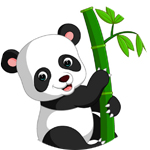虫:hui,通读chong,原是一条蝮蛇的象形,一般与昆虫或小动物有关。
Insect: hui, read through chong, was originally a pictogram of a viper, generally related to insects or small animals.
【虫】作为部首叫:虫字旁
【虫】读音: chóng ,意思是:虫子
【虫】的笔顺:竖、横折、横、竖、横、点
含有【虫】的字:蜈、蚊、螃、蛀、蛰
扩展资料
部分字的解释:
一、蜈的释义:
〔蜈蚣〕节肢动物。躯干由多数体节构成,每节有足一对。头部的足像钩子,有毒腺,能分泌毒液。以小虫为食。可入药。
二、蚊的释义:
蚊子,昆虫。 一般指水生孑孓的成虫。雌虫吸人、畜的血液,能传染疟疾和流行性乙型脑炎等。 也泛指 一些双翅类小昆虫,如瘿蚊、摇蚊,有的是农业害虫。
三、螃的释义:
〔螃蟹〕节肢动物。种类很多,如毛蟹、青蟹、梭子蟹等。有足5对,前一对钳状,横着爬行。肉鲜美,可食。
四、蛀的释义:
1、蛀虫,咬树木、衣物、粮食、书籍等的小虫。
2、被虫子咬坏。
五、蛰的释义:
动物在冬天潜伏起来,不食不动。
[Chong] as a radical called: next to the word Chong
[Worm] pronunciation: chóng, meaning: worm
[Bug] stroke order: vertical, horizontal fold, horizontal, vertical, horizontal, dot
Words containing “worm”: centipede, mosquito, crab, moth, sting
Extended information
Explanation of some words:
1. Interpretation of Centipede:
[Centipede] Arthropod. The torso is made up of many body segments, each segment has a pair of feet. The feet on the head are like hooks with venom glands that secrete venom. Feed on small insects. Can be used as medicine.
2. Interpretation of mosquitoes:
Mosquitoes, insects. Generally refers to the adult aquatic larvae. Female worms suck human and animal blood and can infect malaria and Japanese encephalitis. It also refers to some small dipteran insects, such as gall midge and chironomus, and some are agricultural pests.
3. Interpretation of Crab:
[Crab] Arthropods. There are many types, such as hairy crabs, blue crabs, and swimming crabs. There are 5 pairs of feet, the first pair is pincer-shaped, crawling sideways. The meat is delicious and edible.
4. Interpretation of moth:
1. Moths, small insects that bite trees, clothing, food, books, etc.
2. Bitten by bugs.
5. Interpretation of sting:
Animals lurking in the winter, unable to eat.

